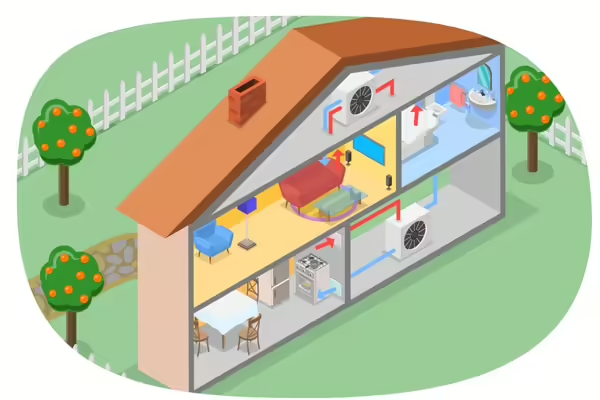
October is Healthy Lung Month, a timely reminder to prioritize lung health and early detection. With most people spending nearly 90% of their time indoors, the air inside our homes plays a critical role in overall well-being. Children, older adults, and individuals with asthma or heart disease are especially vulnerable to poor indoor air quality. Pollutants can trigger both short-term symptoms—like headaches and skin irritation—and long-term
conditions such as emphysema and even cancer.
This month, take steps to improve your indoor air and breathe better with these 7 steps.
7 Steps to Cleaner Indoor Air
1. Dust and vacuum weekly—more often if you have pets, kids, or allergies.
2. Open windows for 10 minutes daily to flush out indoor pollutants.
3. Test for radon every two years, even if you have a mitigation system.
4. Use furnace filters with a MERV-13 rating and replace them regularly.
5. Skip air fresheners. Choose unscented or low-VOC cleaning products.
6. Control moisture to prevent mold. Aim for 30–50% humidity and watch for condensation.
7. Prepare for wildfire smoke. Create a “clean room” with portable air cleaners or a DIY box fan filter.
Additional Resources:
American Lung Association: Let the Air In
EPA Publications about Indoor Air Quality
Wildfires and Indoor Air Quality
University of Illinois Extension develops educational programs, extends knowledge, and builds partnerships to support people, communities, and their environments as part of the state's land-grant institution. Extension serves as the leading public outreach effort for University of Illinois Urbana-Champaign and the College of Agricultural, Consumer and Environmental Sciences in all 102 Illinois counties through a network of 27 multi-county units and over 700 staff statewide. Extension’s mission is responsive to eight strategic priorities — community, economy, environment, food and agriculture, health, partnerships, technology and discovery, and workforce excellence — that are served through six program areas — 4-H youth development, agriculture and agribusiness, community and economic development, family and consumer science, integrated health disparities, and natural resources, environment, and energy.